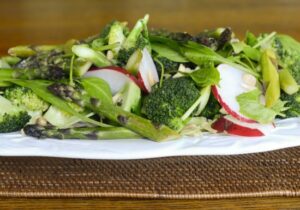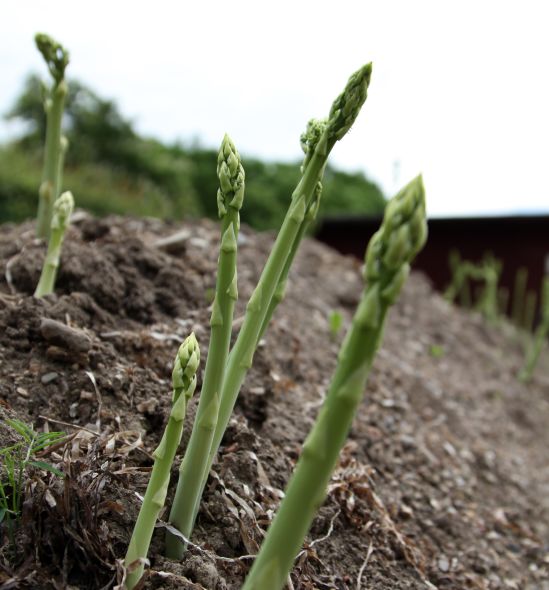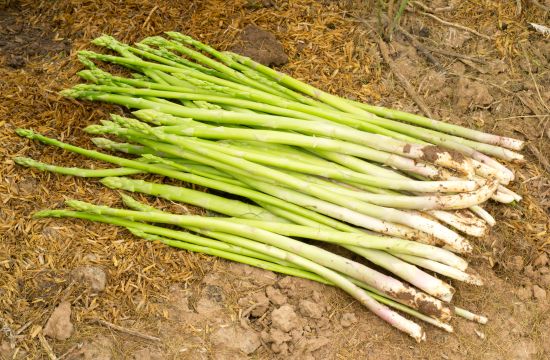
The taste of asparagus fresh from the garden is synonymous with spring. The slender spears are at their best lightly steamed and topped with a knob of butter and a squeeze of lemon juice.
Rich in B vitamins, vitamin C, calcium and iron, asparagus is a delicacy only the home gardener can experience, as the taste and nutritional value change if it’s stored for a period of time.

One of the few perennial vegetable crops, asparagus comes back year after year, producing kilograms of succulent spears for 15 to 20 years or more. If you have too much you can sell at your local Farmers’ Market or store it in the freezer. To prepare it for freezing, just blanch it in boiling water, then chill in ice water before you pop it in bags in the freezer.
Around the shortest day of the year, it’s time to get your asparagus bed ready for planting. The most important requirement is drainage, so raising the bed above ground level is vital.
You can grow asparagus from seed but it’s quicker and easier to buy two-year-old crowns from a reliable source. Many modern varieties are hybridised and produce male spears only. The open pollinated varieties eg Mary Washington, produce both male and female spears and are more suited to the home gardener.
Fill the base of the bed with well-rotted rich compost and make a mound to lay the crowns on. Cover the crowns with soil until the centre is completely submerged. A layer of mulch is beneficial to protect the crowns and help with weed control. Space the crowns out about 40 centimetres apart.
If your soil is acidic give it a good dressing of lime. Asparagus prefer a soil pH of 6.5-7.5 (slightly alkaline).

In the first year don’t pick the spears as they emerge, even if some are vigorous-looking. In the second year pick for a few weeks only. By the third year you can pick for a few months. When you’re harvesting, cut the stems just below the surface taking care not to cut too deep as you’ll damage the crown.
As an asparagus bed will continue to produce for a long time, yearly maintenance is important. Once the harvest is complete, tall ferny growth appears and if you look after the ferns well, your next year’s crop will be bountiful.
Wait for the ferns to die back in autumn. They’ll become dry and brown and all the energy goes back into the crowns. Remove the fronds and apply compost. Asparagus evolved as a seaside plant so a yearly mulch of unwashed seaweed is highly beneficial. Add seaweed during late autumn or early winter and this will feed the soil and plants and help prevent weeds. Sea-salted sand is also a good additive.
Asparagus is a natural diuretic helping to detoxify and cleanse the kidneys, and studies show it helps balance insulin levels which is important for preventing diabetes.
Website designed by www.thecornerstorecollective.com
Developed by Richard Hpa